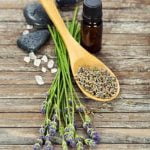Are you looking for a fun and creative way to incorporate aromatherapy into your daily routine? Look no further. In this article, we will explore how to make aromatherapy slime, a unique sensory experience that combines the benefits of aromatherapy with the popular trend of slime making. Aromatherapy has long been lauded for its therapeutic effects on the mind and body, and now you can harness those benefits in a playful and interactive way.
Aromatherapy involves using natural plant extracts, known as essential oils, to promote health and well-being. These oils are believed to have various therapeutic properties that can help reduce stress, boost mood, and improve overall mental and physical wellness. By infusing these essential oils into homemade slime, you can create a calming and soothing sensory experience that is both enjoyable and beneficial.
When it comes to choosing the right essential oils for your aromatherapy slime, there are several options to consider. Each type of essential oil offers unique benefits and aromatic profiles that can enhance the sensory experience of your slime.
From calming lavender to uplifting citrus scents, the possibilities are endless. In the following sections, we will delve into more detail about selecting the right essential oils for your aromatherapy slime and provide step-by-step instructions for creating your own customized sensory masterpiece.
Choosing the Right Essential Oils
When making aromatherapy slime, choosing the right essential oils is crucial in creating a sensory experience that promotes relaxation and overall well-being. Essential oils have been used for centuries for their therapeutic properties, and when combined with the fun and tactile nature of slime, they can provide a unique way to enjoy aromatherapy.
Discussing Different Essential Oils
There are numerous essential oils to choose from, each with its own distinct benefits. Lavender oil is known for its calming properties and can help promote relaxation and reduce stress. Eucalyptus oil has a refreshing scent that can clear the mind and improve focus. Peppermint oil has an invigorating aroma that can help boost energy levels and alleviate headaches.
Enhancing the Sensory Experience
When selecting essential oils for aromatherapy slime, it’s important to consider how different scents can enhance the sensory experience. For example, citrus oils like lemon or orange can add a bright and uplifting aroma to the slime, while earthy scents like cedarwood or patchouli can create a grounding effect. By carefully choosing the right combination of essential oils, it’s possible to create a customized aromatherapy slime that caters to individual preferences and desired effects.
Tips for Incorporating Essential Oils
When adding essential oils to the slime mixture, it’s important to use high-quality oils and incorporate them gradually while mixing the ingredients. Start with just a few drops of oil at a time and adjust according to personal preference. Additionally, be mindful of any potential skin sensitivities or allergies when selecting and using essential oils in aromatherapy slime. By carefully considering these factors, it is possible to create an aromatic and relaxing slime experience that enhances well-being.
Ingredients and Supplies Needed
Aromatherapy slime is a fun and innovative way to combine the benefits of aromatherapy with the popular trend of making slime. To create your own aromatherapy slime, you will need to gather the right ingredients and supplies. In this section, we’ll provide a detailed list of everything you’ll need to make your own aromatic slime creation.
Essential Oils
The first and most important ingredient for aromatherapy slime is essential oils. When choosing essential oils for your slime, it’s important to select those that are known for their calming or invigorating properties. Lavender oil, known for its relaxing effects, is a popular choice for aromatherapy slime.
Other options include citrus oils such as lemon or orange, which can provide an uplifting and energizing scent. It is important to take into account any potential allergies or sensitivities when selecting essential oils.
Slime Base
In addition to essential oils, you will also need the basic ingredients for making slime. This includes white school glue, liquid starch or saline solution, and water. These ingredients form the base of the slime and will provide the desired texture for your aromatherapy creation.
Supplies
Aside from the ingredients mentioned above, you will also need some basic supplies such as mixing bowls, measuring cups and spoons, as well as food coloring if you wish to add color to your slime. Additionally, consider using high-quality containers with secure lids to store your finished aromatherapy slimes.
Now that you have all the necessary ingredients and supplies gathered, it’s time to move on to the exciting part: creating your very own aromatic slime. Below are step-by-step instructions on how to make aromatherapy slime that not only looks appealing but also offers therapeutic benefits through scent.
Step-by-Step Slime Making Instructions
To make aromatherapy slime, you will need a few key ingredients and supplies. Here’s a step-by-step guide on how to create your own soothing and scented slime:
1. Gather Your Supplies: To start, gather the following ingredients and supplies: white school glue, baking soda, contact lens solution (containing boric acid), your choice of essential oils for aromatherapy, and any desired coloring or embellishments for the slime.
2. Mix the Glue and Baking Soda: In a bowl, pour out the entire 4-6 oz bottle of white school glue. Add 1/2 tablespoon of baking soda and mix well until the baking soda is fully incorporated into the glue.
3. Add Coloring and Essential Oils: If desired, add a few drops of food coloring to achieve your desired hue. Then, drop in 5-10 drops of your chosen essential oils for aromatherapy. Popular options include lavender for relaxation, peppermint for energy, or citrus scents for mood enhancement.
4. Activate the Slime: Once you have added the essential oils and any colorings, it’s time to activate the slime by adding about 1 tablespoon of contact lens solution to the mixture. Mix well with a spoon until it starts to come together.
5. Knead and Enjoy: At this point, you can take the slime out of the bowl and knead it with your hands to achieve a smooth consistency. The more you knead it, the better it will become. Now you are ready to relax and enjoy your personalized aromatherapy slime.
Remember that creating aromatherapy slime allows individuals to personalize their sensory experiences while providing possible wellness benefits from essential oils such as stress relief or mood enhancement. Experimenting with different scents can help individuals find their perfect aroma combination to support their overall well-being through sensory stimulation.
Adding Aromatherapy Elements to the Slime
When it comes to making aromatherapy slime, the key is to incorporate essential oils in a way that enhances the sensory experience without compromising the texture and consistency of the slime. Here are some effective ways to add aromatherapy elements to your slime:
1. Mixing Essential Oils with Base Ingredients: Once you have prepared the base ingredients for your slime (typically glue, water, and activator), you can add a few drops of your chosen essential oil directly into the mixture. Make sure to start with a small amount and adjust according to your preference. Popular choices include lavender oil for relaxation, peppermint oil for an invigorating scent, and citrus oils for a refreshing aroma.
2. Using Scented Add-Ins: If you prefer not to mix essential oils directly into the slime, another option is to use scented add-ins such as scented foam beads or scented glitter. These products are infused with fragrances that can complement the aromatherapeutic benefits of essential oils while adding visual appeal to your slime.
3. Layering Scents: For a more complex sensory experience, consider layering different scents in your aromatherapy slime. Create distinct sections within the slime mixture and add different essential oils or scented add-ins to each section. As you play with the slime, you will experience a gradual shift in aromas, adding an extra dimension to the sensory stimulation.
Remember that when using essential oils in slime making, it’s important to exercise caution and avoid over-saturating the mixture with strong fragrances. Always start with a small amount of oil and gradually adjust as needed based on your personal preference. By being mindful of how you incorporate aromatherapy elements into your slime, you can create a truly unique and personalized sensory experience.
Safety Precautions and Considerations
Adding essential oils to slime can be a fun and creative way to incorporate aromatherapy into your daily routine. However, it’s important to take some safety precautions and considerations when working with essential oils in this manner. Here are some guidelines on how to ensure the safe use of aromatherapy slime.
First and foremost, it is crucial to research and understand the specific essential oils you plan to use in your aromatherapy slime. Not all essential oils are suitable for everyone, and some may cause allergic reactions or skin irritations. Always perform a patch test before using a new oil, especially if you have sensitive skin or existing allergies.
In addition, essential oils are highly concentrated substances and should never be ingested. When making aromatherapy slime, make sure that it is kept away from the mouth and eyes to prevent accidental ingestion or exposure. It is also vital to store the finished slime in a sealed container away from pets or small children who may be tempted to taste it.
Lastly, proper ventilation is important when working with essential oils. While mixing the oils into the slime, make sure that you are in a well-ventilated area to avoid inhaling concentrated fumes. Always use essential oils in moderation and according to recommended dilution guidelines to prevent overwhelming scents or adverse effects.
| Safety Precaution | Guidelines |
|---|---|
| Perform Patch Test | Test each new oil on a small area of skin before using it in slime. |
| Avoid Ingestion | Keep aromatherapy slime away from the mouth and eyes. |
| Proper Ventilation | Mix essential oils in a well-ventilated area to prevent inhaling concentrated fumes. |
Customizing Your Aromatherapy Slime
Creating your own aromatherapy slime can be a fun and creative way to incorporate the benefits of essential oils into your sensory play. Once you have mastered the art of making basic aromatherapy slime, it’s time to take it up a notch by customizing it to your liking. There are several ways you can personalize your aromatherapy slime to make it uniquely yours.
One way to customize your aromatherapy slime is by adding colors and glitter. You can use food coloring or specialized slime dyes to achieve the desired color for your slime. Adding different colors can not only make the slime visually appealing but also enhance the overall sensory experience. Glitter is another popular addition that can give your slime a magical and sparkly touch.
In addition to colors and glitter, you can also experiment with different scents and textures. Consider mixing different essential oils to create unique scent combinations that appeal to your senses. For example, combining lavender and chamomile essential oils can create a calming and soothing aroma, perfect for relaxation. You can also incorporate small beads, foam balls, or other textures into your slime to create an interesting tactile experience.
Lastly, you can add other embellishments such as small toys, confetti, or even miniature figurines to customize your aromatherapy slime. These additions can make playing with the slime more interactive and engaging, especially for kids. Get creative and let your imagination run wild as you explore different ways to customize your aromatherapy slime.
| Customization Ideas | Description |
|---|---|
| Colors | Add food coloring or specialized dyes for visual appeal. |
| Glitter | Add sparkly touches for a magical feel. |
| Scent Combinations | Experiment with different essential oils for unique aromas. |
| Textures | Incorporate beads, foam balls, or other materials for tactile experiences. |
Enjoying the Benefits of Aromatherapy Slime
In conclusion, making aromatherapy slime can be a fun and creative way to incorporate the benefits of aromatherapy into your daily routine. By choosing the right essential oils and following the step-by-step instructions for creating the perfect slime texture, you can enjoy a sensory experience that not only engages your sense of touch and sight but also provides unique fragrance benefits.
Whether you’re looking to relax, boost your mood, or simply have some fun with sensory play, aromatherapy slime can be a versatile tool for achieving these goals.
When it comes to adding aromatherapy elements to your slime, there are various techniques that can enhance the scent and longevity of the aroma. From incorporating essential oils directly into the slime mixture to using scented beads or diffuser sticks within the storage container, there are plenty of options for achieving a strong and long-lasting aroma in your aromatherapy slime.
It’s important to keep safety precautions in mind by using essential oils responsibly and considering any potential sensitivities or allergies.
Overall, customizing your aromatherapy slime to suit your preferences is all part of the fun. Whether you want to add colors, glitter, or different textures to your slime, or experiment with combining different scents for a more complex aroma, there are countless ways to make your aromatherapy slime uniquely yours.
With its stress-relieving and mood-boosting effects, it can serve as an effective relaxation aid or sensory stimulation tool for both children and adults alike. So why not give it a try and see how making aromatherapy slime can elevate your sensory experience?
Frequently Asked Questions
How Do You Make Scented Slimes?
To make scented slime, start by making a basic slime using glue and borax or contact lens solution and baking soda. Once the slime is formed, add a few drops of your favorite scented oil and knead it in until it’s well distributed.
How Do You Make Slime With Essential Oils?
Making slime with essential oils involves adding a few drops of your chosen essential oil to the slime mixture before it’s fully formed. Be sure to choose an essential oil that is safe for skin contact and that you enjoy the scent of.
How Do You Make Stress Relief Slime?
Stress relief slime can be made by adding calming scents like lavender or eucalyptus essential oils to the slime mixture. Additionally, incorporating textures like foam beads or kinetic sand can enhance the stress-relieving properties of the slime.

Are you looking for a natural way to improve your health and wellbeing?
If so, aromatherapy may be the answer for you.





